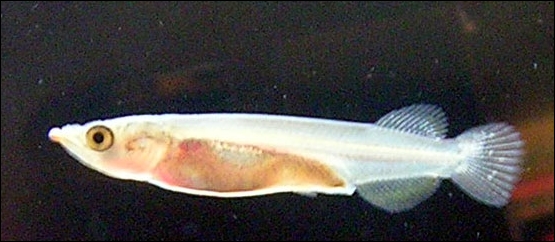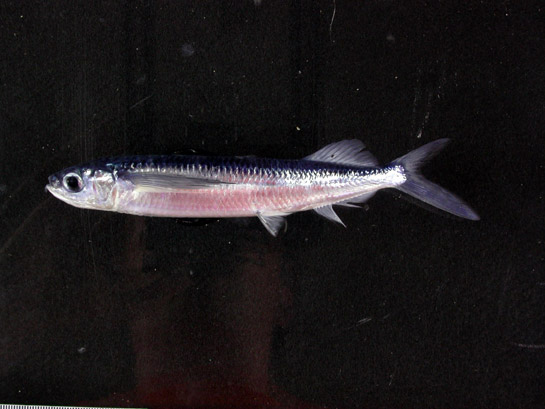|
Zenarchopteridae
Zenarchopteridae, the viviparous halfbeaks, is a family in the order Beloniformes. The Zenarchopteridae exhibit strong sexual dimorphism, practicing internal fertilisation, and in some cases ovoviviparous or viviparous (the family also includes oviparous species).Berra, T.M. (2001). ''Freshwater Fish Distribution.'' p. 320. Tan, H.H. & Lim, K.K.P. (2013). Three new species of freshwater halfbeaks (Teleostei: Zenarchopteridae: ''Hemirhamphodon'') from Borneo.' The Raffles Bulletin of Zoology 61(2): 735–747. The members in the family are mainly found in fresh and brackish water of tropical Asia and New Guinea, but the genus ''Zenarchopterus'' also includes marine species from the Indo-Pacific. Several, such as the wrestling halfbeak, have become commonly traded aquarium fish. Genera The following genera are classified within the family Zenarchopteridae * ''Dermogenys'' Kuhl & van Hasselt, 1823 * ''Hemirhamphodon'' Bleeker, 1865 * '' Nomorhamphus'' Weber & de Beaufort ... [...More Info...] [...Related Items...] OR: [Wikipedia] [Google] [Baidu] |
Nomorhamphus
''Nomorhamphus'' is a southeast Asian genus of viviparous halfbeaks from streams, rivers and lakes in Sulawesi (Indonesia) and the Philippines. They are all viviparous, producing small clutches of around a dozen fry about 10 to 15 mm long at birth. Females are generally larger than the males. In the largest species, such as ''Nomorhamphus liemi'', the females typically reach about in length, whereas the males reach about in length. Males are also more brightly coloured than the females (often having red, black, or blue patches on their fins). Compared with many other halfbeaks, the lower mandible, or beak, is relatively short, on females in particular barely protruding beyond the length of the upper mandible. The males of some species (e.g., '' N. ebrardtii'') have short, straight beaks, but those of others (e.g., '' N. liemi'') have short beaks that curve downwards forming a shape often compared to a goatee beard by aquarists. '' N. aenigma'' is unique within ''Nomorhamphu ... [...More Info...] [...Related Items...] OR: [Wikipedia] [Google] [Baidu] |
Beloniformes
Beloniformes is an order composed of six families (and about 264 species) of freshwater and marine ray-finned fish: * Adrianichthyidae (ricefish and medakas) * Belonidae (needlefish) * Exocoetidae (flyingfishes) * Hemiramphidae (halfbeaks) * Scomberesocidae (sauries) * Zenarchopteridae (viviparous halfbeaks) With the exception of the Adrianichthyidae, these are streamlined, medium-sized fishes that live close to the surface of the water, feeding on algae, plankton, or smaller animals including other fishes. Most are marine, though a few needlefish and halfbeaks inhabit brackish and fresh waters. The order is sometimes divided up into two suborders, the Adrianichthyoidei and the Belonoidei, although this clade is referred to as Exocoetoidei in the 5th edition of ''Fishes of the World''. The Adrianichthyoidei contain only a single family, the Adrianichthyidae. Originally, the Adrianichthyidae were included in the Cyprinodontiformes and assumed to be closely related to t ... [...More Info...] [...Related Items...] OR: [Wikipedia] [Google] [Baidu] |
Dermogenys
''Dermogenys'' is a genus of viviparous halfbeaks. They are widely distributed in fresh and brackish water in South and Southeast Asia, ranging from India to the Philippines and Greater Sundas. They are all viviparous, producing small clutches of up to 30 fry that closely resemble the adults, except they are much smaller, around in length. Adults are typically around in length, with females being slightly larger than males. Males tend to be more brightly coloured and are well known for being aggressive towards one another. The wrestling halfbeak, ''D. pusilla'', is widely used in Asia as fighting animals upon which wagers are placed (see Siamese fighting fish). Both sexes have lower jaws (mandibles) that are much longer than the upper ones, and from this comes the "halfbeak" name. ''Dermogenys'' feed extensively on small insects, either in the form of aquatic larvae or as flying insects that have fallen onto the surface of the water. They are important predators on insects s ... [...More Info...] [...Related Items...] OR: [Wikipedia] [Google] [Baidu] |
Halfbeak
Hemiramphidae is a family of fishes that are commonly called halfbeaks, spipe fish or spipefish. They are a geographically widespread and numerically abundant family of epipelagic fish inhabiting warm waters around the world. The halfbeaks are named for their distinctive jaws, in which the lower jaws are significantly longer than the upper jaws. The similar viviparous halfbeaks (family Zenarchopteridae) have often been included in this family. Though not commercially important themselves, these forage fish support artisanal fisheries and local markets worldwide. They are also fed upon by other commercially important predatory fishes, such as billfishes, mackerels, and sharks. Taxonomy In 1758, Carl Linnaeus was the first to scientifically describe a halfbeak, ''Esox brasiliensis'' (now '' Hemiramphus brasiliensis''). In 1775 Peter Forsskål described two more species as ''Esox'', '' Esox far'' and '' Esox marginatus''. It was not until 1816 that Georges Cuvier crea ... [...More Info...] [...Related Items...] OR: [Wikipedia] [Google] [Baidu] |
Hemirhamphodon
''Hemirhamphodon'' is a genus of viviparous halfbeak fish. Most recognized species are endemic to lowland forest streams, rivers and swamps in Borneo (often in areas with peat), but ''H. phaiosoma'' and ''H. pogonognathus'' are also found elsewhere in Southeast Asia. The largest species reaches about in length. These fish are viviparous (with the exception of oviparious ''H. tengah'') and are sometimes kept as aquarium fish, but otherwise have no commercial value. Species There are currently nine recognized species in this genus: * '' Hemirhamphodon byssus'' H. H. Tan & K. K. P. Lim, 2013Tan, H.H. & Lim, K.K.P. (2013)Three new species of freshwater halfbeaks (Teleostei: Zenarchopteridae: ''Hemirhamphodon'') from Borneo. ''The Raffles Bulletin of Zoology, 61 (2): 735–747.'' * '' Hemirhamphodon chrysopunctatus'' Brembach, 1978 * '' Hemirhamphodon kapuasensis'' Collette, 1991 * '' Hemirhamphodon kecil'' H. H. Tan & K. K. P. Lim, 2013 * '' Hemirhamphodon kuekenthali'' Steinda ... [...More Info...] [...Related Items...] OR: [Wikipedia] [Google] [Baidu] |
Heinrich Kuhl
Heinrich Kuhl (17 September 1797 – 14 September 1821) was a German naturalist and zoologist. Kuhl was born in Hanau (Hesse, Germany). Between 1817 and 1820, he was the assistant of professor Th. van Swinderen, docent natural history at the University of Groningen in Groningen (the Netherlands). In 1817, he published a monograph on bats, and in 1819, he published a survey of the parrots, ''Conspectus psittacorum''. He also published the first monograph on the petrels, and a list of all the birds illustrated in Daubenton's ''Planches Enluminées'' and with his friend Johan Coenraad van Hasselt (1797–1823) ''Beiträge zur Zoologie und vergleichenden Anatomie'' ("Contributions to Zoology and Comparative Anatomy") that were published at Frankfurt-am-Main, 1820. In 1820, he became assistant to Coenraad Jacob Temminck at the Leiden Rijksmuseum van Natuurlijke Historie. He then travelled to Java, then part of the colonial Netherlands East Indies, with his friend van Hasselt, t ... [...More Info...] [...Related Items...] OR: [Wikipedia] [Google] [Baidu] |
Zenarchopterus
''Zenarchopterus'' is a genus of viviparous halfbeaks. These fish are found in marine, brackish and fresh water of the Indo-Pacific region. Despite being in the viviparous halfbeak family, ''Zenarchopterus'' species are oviparous.Berra, T.M. (2001). ''Freshwater Fish Distribution.'' p. 320. They are commonly known as river garfish. Species There are currently 19 recognized species in this genus: * '' Zenarchopterus alleni'' Collette, 1982 (Allen's river garfish) * '' Zenarchopterus buffonis'' (Valenciennes, 1847) (Buffon's river garfish) * '' Zenarchopterus caudovittatus'' ( M. C. W. Weber, 1907) (Long-jawed river garfish) * '' Zenarchopterus clarus'' Mohr, 1926 * '' Zenarchopterus dispar'' (Valenciennes Valenciennes (, also , , ; nl, label=also Dutch, Valencijn; pcd, Valincyinnes or ; la, Valentianae) is a commune in the Nord department, Hauts-de-France, France. It lies on the Scheldt () river. Although the city and region experienced a ..., 1847) (Feathered ri ... [...More Info...] [...Related Items...] OR: [Wikipedia] [Google] [Baidu] |
Max Carl Wilhelm Weber
Max Carl Wilhelm Weber van Bosse or Max Wilhelm Carl Weber (5 December 1852, in Bonn – 7 February 1937, in Eerbeek) was a German- Dutch zoologist and biogeographer. Weber studied at the University of Bonn, then at the Humboldt University in Berlin with the zoologist Eduard Carl von Martens (1831–1904). He obtained his doctorate in 1877. Weber taught at the University of Utrecht then participated in an expedition to the Barents Sea. He became Professor of Zoology, Anatomy and Physiology at the University of Amsterdam in 1883. In the same year he received naturalised Dutch citizenship. His discoveries as leader of the Siboga Expedition led him to propose Weber's line, which encloses the region in which the mammalian fauna is exclusively Australasian, as an alternative to Wallace's Line. As is the case with plant species, faunal surveys revealed that for most vertebrate groups Wallace’s line was not the most significant biogeographic boundary. The Tanimbar Island g ... [...More Info...] [...Related Items...] OR: [Wikipedia] [Google] [Baidu] |
Lieven Ferdinand De Beaufort
Lieven Ferdinand de Beaufort (March 23, 1879 in Den Treek, Leusden – 11 May 1968 in Amersfoort) was a Dutch biologist who, in 1903, participated in the North New Guinea Expedition. In the 1920s he was director of the Zoological Museum of Artis in Amsterdam and later zoogeography professor at the University of Amsterdam. Beaufort is commemorated in the scientific name of a species of lizard, ''Sphenomorphus beauforti'', which is a synonym of '' Sphenomorphus schultzei''. www.reptile-database.org. See also * :Taxa named by Lieven Ferdinand de Beaufort References SourcesProf. dr. L.F. de Beaufort, 1879 - 1968at the University of Amsterdam The University of Amsterdam (abbreviated as UvA, nl, Universiteit van Amsterdam) is a public research university located in Amsterdam, Netherlands. The UvA is one of two large, publicly funded research universities in the city, the other bein ... ''Album Academicum'' website 1879 births 1968 deaths Dutch zoologists Univers ... [...More Info...] [...Related Items...] OR: [Wikipedia] [Google] [Baidu] |
Theodore Nicholas Gill
Theodore Nicholas Gill (March 21, 1837 – September 25, 1914) was an American ichthyologist, mammalogist, malacologist and librarian. Career Born and educated in New York City under private tutors, Gill early showed interest in natural history. He was associated with J. Carson Brevoort in the arrangement of the latter's entomological and ichthyological collections before going to Washington D.C. in 1863 to work at the Smithsonian Institution. He catalogued mammals, fishes and mollusks most particularly although maintaining proficiency in other orders of animals. He was librarian at the Smithsonian and also senior assistant to the Library of Congress. He was elected as a member of the American Philosophical Society in 1867. Gill was professor of zoology at George Washington University. He was also a member of the Megatherium Club at the Smithsonian Institution in Washington, D.C. Fellow members frequently mocked him for his vanity. He was president of the American Association ... [...More Info...] [...Related Items...] OR: [Wikipedia] [Google] [Baidu] |
Bruce Baden Collette
Bruce Baden Collette (born March 13, 1934) is an American ichthyologist. Biography He was born on March 13, 1934, in Brooklyn, New York. He is the son of Raymond Hill Collette and Agnes Hellen (Lavsen) Collette. Publications * ''The diversity of fishes : biology, evolution, and ecology'' (with Gene S. Helfman and Douglas E. Facey); Malden (Mass.) : Blackwell science, cop. 2009. * ''Results of the Tektite Program: ecology of coral reef fishes'' (with Sylvia Alice Earle); Natural History Museum, Los Angeles County, 1972. - Taxon named in his honor *The |





